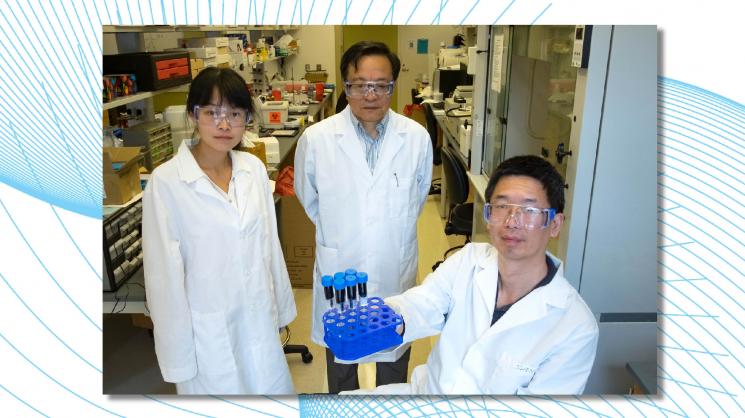Immune checkpoints are a crucial part of the body’s immune system that regulate a multitude of cellular responses to protect against disease and prevent autoimmunity. Cancer cells are able to escape this tightly controlled surveillance system partly by using checkpoint pathways to block anti-tumor responses.
New collaborative research between Rice University bioengineers Sheng Tong and Gang Bao and oncologist Cassian Yee from the University of Texas MD Anderson Cancer Center involves the engineering of nanoscale systems that target the tumor and disrupt its immunosuppressive defense mechanisms, thus inducing a cascade of antitumor immune responses.
Tong says the work, which is supported by a new four-year $2 million grant from the National Institutes of Health, will not only expand the understanding of cancer immunogenicity and tumor-immune system interactions, but also reveal new directions in multiplexed and personalized cancer immunotherapy.
“There is a critical unmet medical need for many patients, particularly those diagnosed with the most lethal types of cancer, who do not benefit from current immunotherapies because the lack of knowledge of the diverse tumor responses that inhibit the initiation of anticancer immunity,” said Tong, a principal investigator on the project, who joined the Rice faculty from the Georgia Institute of Technology with Bao in 2015.
The team aims to develop a therapeutic genome editing system, which includes packaging the CRISPR/Cas9 machinery within baculoviral vectors (BV) that targets the tumor’s immune checkpoint inhibitors and immunosuppressive genes, and disrupts its activity. Magnetic iron oxide nanoparticles (MNP) attached to the BV surface will serve as a switch to induce controlled local gene editing under an applied magnetic field.
“Derived from an insect virus, BV is a cylindrically shaped vector that can carry large DNA molecules. This allows for the packaging of multiple genes,” added Bao, Rice’s Foyt Family Professor of Bioengineering, CPRIT Scholar in Cancer Research, and professor of chemistry.
Bao said the CPISPR/Cas9 system is an efficient genome editing tool that can induce sequence-specific gene disruption, modification or regulation. “But, the typical viral-based in vivo delivery of genome editing machinery can induce cutting activities in normal tissues, causing genotoxicity and side effects. This delivery challenge has been a big hurdle for the clinical translation of the genome editing technique.”
Recent studies in the Bao lab have focused on targeted nucleic acid delivery methods that involve the use of a locally applied magnetic field that serves as a precise external control and as an “on-off” switch for controlled tissue-specific genome editing in vivo.
In addition to serving as the magnetic switch for local viral transduction, the biocompatible MNPs attached to the surface of the BV vector serve as an imaging contrast agent for tracking the BV vector. This information will allow the team to rigorously quantify the in vivo delivery efficiency and biodistribution of the MNP-BV-CRISPR, and examine the off-target effects induced by the gene editing machinery.
Yee, a pioneer of cancer immunotherapy in the Department of Melanoma Medical Oncology at MD Anderson, will help evaluate and optimize the antitumor immunity of the new therapy in animal models.
“There is a lot of enthusiasm in the use of combination strategies such as this to improve the prognosis for patients battling the toughest cancers,” said Tong. “If we are successful, we’ll develop an efficient immunotherapy in which the genetic targets can be easily designed and implemented according to the immunological profile of individual cancer patients.”

